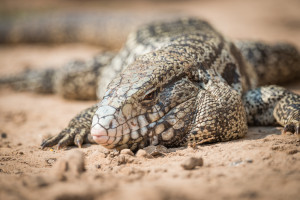 Burmese pythons are well-known to be a major problem in the Everglades; however, there are other invasive species in this vast wetland that are a problem to the local ecosystem. One such species is the tegu lizard, which originated in South America. In fact, they are on the state’s list of most aggressive invasive species. So, how did the tegu lizards end up in the Everglades in Florida? They either escaped or were released from people who owned them as pets.
Burmese pythons are well-known to be a major problem in the Everglades; however, there are other invasive species in this vast wetland that are a problem to the local ecosystem. One such species is the tegu lizard, which originated in South America. In fact, they are on the state’s list of most aggressive invasive species. So, how did the tegu lizards end up in the Everglades in Florida? They either escaped or were released from people who owned them as pets.
The tegu lizard is a threat to native birds, alligators, sea turtles, small mammals, and crocodiles; biologists from the University of Florida said it is believed this lizard could be as destructive as the Burmese python. This lizard is still currently sold in pet stores in the state. As of right now, trapping and selling them is legal. State workers, members of the Florida Fish and Wildlife Conservation Commission and biologists from UF have seen these lizards in places they haven’t been before, which means there is a growing number of them.
Tegus live in burrows and forage around water; they eat fruit, seeds, eggs, dog or cat food, insects, and small mammals. They are active during the day and can often be spotted on roadsides and other disturbed areas. During the colder months, they stay covered or in a burrow. Since they are able to withstand colder temps (as low as 35 degrees), biologists believe they can threaten more species than the pythons can.
The can grow up to four feet long and are black and white with a banding pattern on the tail. Gold tegus and Red tegus have also been found in South Florida. The gold tegu grows to two to three feet and has black and gold stripes while the red tegu can grow up to four-and-a-half feet in size and the males have large jowls.
Right now, black-and-white tegus and gold tegus are breeding in parts of Miami-Dade and Hillsborough counties.
Right now, officials are trying to capture as many tegus as possible so that the population does not replenish itself; there are a lot more tegus in the Everglades than they thought. In 2015, they captured around 500 and in 2009 they captured only 13 tegus. Some tegus are being tracked, so biologists can better understand their patterns for trapping efforts to go more successfully.
The biologists are trying to compile convincing evidence of the tegu’s impact on mammals like the python’s, so that hopefully the state will create a plan on how to deal with this invasive species in the future.
If you see a tegu in the Everglades, take a picture and report your location and sighting at 1-888-IVE-GOT1, IveGot1.org, or the IveGot1 app.
Explore the Everglades
The Everglades is a beautiful place full of some amazing creatures; unfortunately, from climate change and invasive species, the Everglades is at risk of shrinking and even disappearing. See this breathtaking wetland while you still can. A great way to explore this Park is on an airboat tour with Captain Mitch. To book a tour, click here or call 800-368-0065.
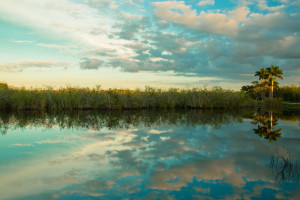 Lately, it seems like most news to come out about the Everglades isn’t too positive. Thankfully however, there was some good news to come out last month. Water quality is being restored in the Everglades. Over the past two decades, the Florida Department of Environmental Protection and the South Florida Water Management District (SFWMD) have had the goal of restoring water quality. Recent tests have shown that at least 90 percent of the Everglades now meets an “ultra clean” water quality when it comes to levels of phosphorus (10 parts per billion or less required by federal consent decree and under state law). Right now, 100 percent of the Everglades is below 8 parts per billion; 86 percent of the Everglades is at 8 parts per billion.
Lately, it seems like most news to come out about the Everglades isn’t too positive. Thankfully however, there was some good news to come out last month. Water quality is being restored in the Everglades. Over the past two decades, the Florida Department of Environmental Protection and the South Florida Water Management District (SFWMD) have had the goal of restoring water quality. Recent tests have shown that at least 90 percent of the Everglades now meets an “ultra clean” water quality when it comes to levels of phosphorus (10 parts per billion or less required by federal consent decree and under state law). Right now, 100 percent of the Everglades is below 8 parts per billion; 86 percent of the Everglades is at 8 parts per billion.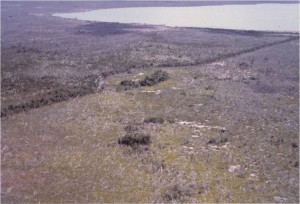 The native people who lived in the Everglades left plenty of evidence behind of their existence. This evidence truly showed the people knew how to manipulate the land and areas around them to ensure their survival as a people. Besides tools, mounds, and tree islands, the native created systems of canals. These canals show the engineering and organization skills these people practiced.
The native people who lived in the Everglades left plenty of evidence behind of their existence. This evidence truly showed the people knew how to manipulate the land and areas around them to ensure their survival as a people. Besides tools, mounds, and tree islands, the native created systems of canals. These canals show the engineering and organization skills these people practiced.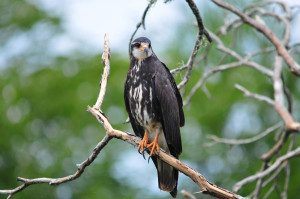 Avid birdwatcher? Well, the Everglades is a great place to go bird watching; you’ll see a variety of birds. The Park provides the perfect setting with plenty of spots where birds roost, nest, eat, or fly by. In fact, the Park is one of the top 10 birding locations in the world; park goers have the chance to see both resident coastal and wading birds in a number of different species. There are more than 350 species of birds in the Everglades for a person to catch a glimpse of! Come prepared with a set of binoculars to spot as many as you can!
Avid birdwatcher? Well, the Everglades is a great place to go bird watching; you’ll see a variety of birds. The Park provides the perfect setting with plenty of spots where birds roost, nest, eat, or fly by. In fact, the Park is one of the top 10 birding locations in the world; park goers have the chance to see both resident coastal and wading birds in a number of different species. There are more than 350 species of birds in the Everglades for a person to catch a glimpse of! Come prepared with a set of binoculars to spot as many as you can!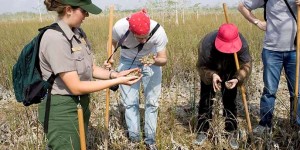 Airboats are an amazing way to zip through the Everglades, and a ride on one of them is certainly something you’ll want to experience at least once in your lifetime; however, there are many ways to explore this national park. If you’re looking for a learning experience while on your exploration of this majestic wetland, then you should book a tour with a ranger.
Airboats are an amazing way to zip through the Everglades, and a ride on one of them is certainly something you’ll want to experience at least once in your lifetime; however, there are many ways to explore this national park. If you’re looking for a learning experience while on your exploration of this majestic wetland, then you should book a tour with a ranger.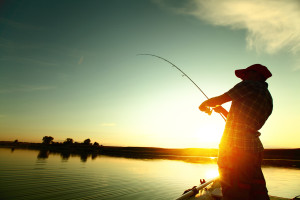 Did you know you can go fishing in the Everglades? You can! Since one-third of the Everglades is water covered, it makes sense that there are plenty of places where fishing would be ideal! In the Park, anglers have the opportunity to catch a variety of fish, including: snapper, redfish, bass, sea trout, and bluegill. Being a national park and in the state of Florida, people must be aware and abide by local fishing information.
Did you know you can go fishing in the Everglades? You can! Since one-third of the Everglades is water covered, it makes sense that there are plenty of places where fishing would be ideal! In the Park, anglers have the opportunity to catch a variety of fish, including: snapper, redfish, bass, sea trout, and bluegill. Being a national park and in the state of Florida, people must be aware and abide by local fishing information.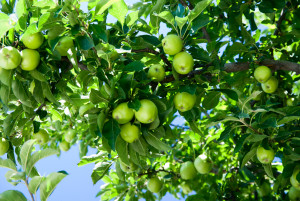 The Everglades is home to an array of plants that thrive in the wet, subtropical climate. Although mangroves and grasses come to many people’s minds when thinking about plant life in the Everglades, we’d like to profile a plant that many people might not know about that is native to the area: the pond apple.
The Everglades is home to an array of plants that thrive in the wet, subtropical climate. Although mangroves and grasses come to many people’s minds when thinking about plant life in the Everglades, we’d like to profile a plant that many people might not know about that is native to the area: the pond apple.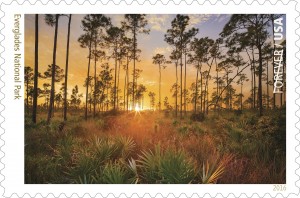 The Everglades is known for many of things, and one of these things is its beauty. Now, the entire country can see this beauty every day if they want. How? A scene of the Everglades National Park will be featured on a forever stamp.
The Everglades is known for many of things, and one of these things is its beauty. Now, the entire country can see this beauty every day if they want. How? A scene of the Everglades National Park will be featured on a forever stamp. The Burmese python is well-known to be an invasive species in the Florida Everglades; however, there seems to be another major invasive reptile in the wetland: The Nile crocodile. Yes, the Everglades are full of crocodiles, but they’re native to America. These Nile crocodiles come from Africa. But, how did these crocs make their way across the Atlantic Ocean? And, how they end up swimming around the Everglades? That is the big question.
The Burmese python is well-known to be an invasive species in the Florida Everglades; however, there seems to be another major invasive reptile in the wetland: The Nile crocodile. Yes, the Everglades are full of crocodiles, but they’re native to America. These Nile crocodiles come from Africa. But, how did these crocs make their way across the Atlantic Ocean? And, how they end up swimming around the Everglades? That is the big question.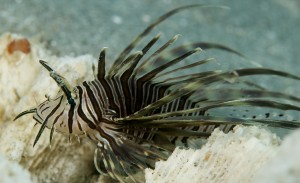 Ever heard of the lionfish? It’s actually quite a pretty fish with its pectoral fins, brownish stripes; however, it’s not so good for the Everglades. It’s considered an invasive species. Invasive species, non-native species to an area, happen to have the ability to live and thrive in habitats that are not their true home or region. Lionfish haven’t been a huge problem yet in the Everglades, but their numbers are increasing each year. In 2014, 13 lionfish were removed from Everglades National Park.
Ever heard of the lionfish? It’s actually quite a pretty fish with its pectoral fins, brownish stripes; however, it’s not so good for the Everglades. It’s considered an invasive species. Invasive species, non-native species to an area, happen to have the ability to live and thrive in habitats that are not their true home or region. Lionfish haven’t been a huge problem yet in the Everglades, but their numbers are increasing each year. In 2014, 13 lionfish were removed from Everglades National Park.





